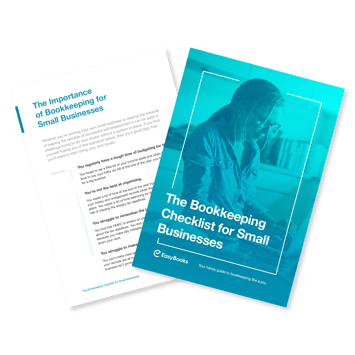A small business requires a balance sheet to get insight into its financial statement and overall value. It helps the owner keep track of the company’s finances, including assets, liabilities, and owner's equity.
Balance sheets are critical accounting tools for small businesses since they provide a picture of a company's financial balances and may also act as crucial indicators of possible growth or decline. First We'll go through and understand how to create a balance sheet for small businesses.
Steps to Creating a Balance Sheet
Understanding how to prepare a balance sheet will enable you to spot potential errors so that you can resolve them before they cause irreversible damage to your business. Here are the steps you can follow to create a basic balance sheet for your small business.
Specify the Reporting Period
A balance sheet indicates the entire amount entering and leaving a firm on a specific day known as the reporting date. Typically, the reporting date is the last day of the reporting period.
The majority of firms issue quarterly reports. In such cases, the reporting date is usually the final day of the quarter of a year. Make sure to create two columns on a piece of paper before continuing.
Identify Your Assets
You must classify assets into two categories and list them on the right column of your balance sheet: Assets are the resources you use to run your business. Separating assets into discrete line items will assist you in understanding what assets your small business owns and where they came from.
Assets are classified into two categories which you need to list on the right column of your balance sheet:
- Current Assets
Examples: Cash and cash equivalents, inventories, accounts receivable, etc. - Non-current Assets
Examples: Land, property, plant, equipment, etc.
Determine Your Liabilities
List the amount of money your business owes under the liabilities section on the left column of the balance sheet. You must identify liabilities in the same way that assets are. You can classify them as follows:
- Current Liabilities
Examples: Accounts payable, interest payable, income taxes payable, bills payable, etc.
- Non-Current Liabilities
Examples: Bonds payable, long-term notes payable, mortgage payable, capital leases, etc.
Determine Shareholders' Equity
The capital raised to invest in the firm by selling its shares is referred to as shareholder equity. Calculating the shareholder's equity in a small firm is typically easy because a single owner privately holds the share. However, because the shares of large corporations are publicly traded, the computation is more complicated.
This section of the balance sheet includes:
- Common stock
- Preferred stock
- Treasury stock
- Retained earnings
Add Total Shareholder Equity and Total Liability to Compare to Assets
To ensure the balance sheet is balanced, you must compare total assets to total liabilities plus equity. Therefore, this simple formula is used: Total Liabilities + Total Shareholders' Equity = Total Assets.
However, there are high chances that both sides of the balance sheet do not balance in one go; you’ll need to spend a considerable time identifying the problem and rectifying it because you’re doing it.
How Can EasyBooks Help to create your Balance Sheet?
Easy Book is a business app designed for small businesses. It takes on the difficult task of these small businesses and makes it appear as simple as pie. However, the app is not just for business owners; it is also useful for sole proprietors and self-employed individuals.
The EasyBook app keeps track of your finances by generating reports such as balance sheets and profit and loss statements. If you want to reduce paperwork, you should start using EasyBooks. It eliminates confusion by producing highly simplified reports, that too online.
This app allows you to do so, but it also keeps track of and monitors your best customers so that you can provide a high level of value to your loyal customer base. BTW, if you want to improve your CRM, definitely check Velainn website.
Conclusion
To ensure smooth cash flow in your small business, you must prepare a perfect balance sheet that tells you what you own versus what you owe. However, doing it by hand can lead to human errors, so it’s better to have an online bookkeeping app on your phone to help you out.
You can start with the EasyBooks free trial to check how easy it is to build a balance sheet for your small business.








